Akriti Pandey
EnthusiastResources & Suggestions
Mains Answer Writing Latest Articles
Daily Answer Writing Practice Questions (18 April 2025)
Do you agree with the claim that indecision and risk aversion are prevalent issues in Indian bureaucracy? Support your answer with logical reasoning. (150 words) ऐसा कहा जाता है कि भारतीय नौकरशाही में अनिर्णय और जोखिम से बचने की प्रवृत्ति ...
Strengthening India’s Cyber Defence
Rising Threats Digital Era Challenges: 2024 marks a significant rise in digital threats, particularly from AI and cyberattacks. Key Issues: Disinformation campaigns. Cyber fraud affecting daily life. Current Major Cyber Threats Ransomware Rampage: Over 48,000 instances of WannaCry ransomware detected ...
भारत की साइबर सुरक्षा
बढ़ते खतरे कृत्रिम बुद्धिमत्ता (AI) और साइबर हमले: 2024 में AI और साइबर हमलों के खतरे में वृद्धि। महत्वपूर्ण अवसंरचना पर हमले: डिजिटल हमलों और दुष्प्रचार अभियानों की संभावना बढ़ी है। प्रमुख साइबर खतरें रैनसमवेयर का प्रकोप: 48,000 से अधिक ...

Discuss the role of agri-logistics infrastructure, such as warehousing, cold storage facilities, and transportation networks, in reducing post-harvest losses and enhancing the market access of farmers, and analyze the policy and investment priorities in this area.
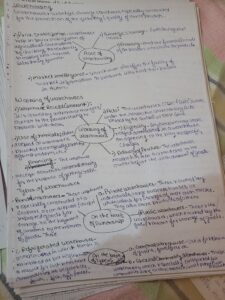
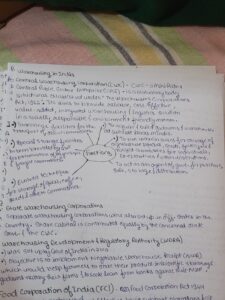
See lessHow can sustainable agriculture practices promote biodiversity conservation?
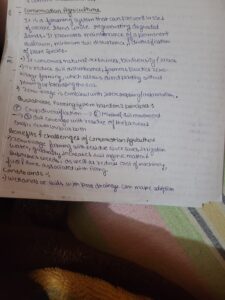

See lessHow can sustainable agriculture practices promote biodiversity conservation?


See lessCulture of Poverty. (Answer limit: 15 words, Marks 02) [RPSC 2023]
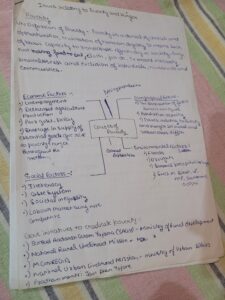
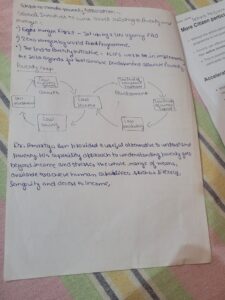
See lessProvide a concise description of the erosional and depositional landforms formed by glacier movement. (Answer in 200 words)
Erosional landforms-: Cirque/Corrie Hollow basin cut into a mountain ridge. It has steep sided slope on three sides, an open end on one side and a flat bottom. When the ice melts, the cirque may develop into a tarn lake. Glacial Trough Original stream-cut valley, further modified by glacial action.Read more
Erosional landforms-:
Cirque/Corrie
Hollow basin cut into a mountain ridge.
It has steep sided slope on three sides, an open end on one side and a flat bottom.
When the ice melts, the cirque may develop into a tarn lake.
Glacial Trough
Original stream-cut valley, further modified by glacial action.
It is a ‘U’ Shaped Valley. It at mature stage of valley formation.
Since glacial mass is heavy and slow moving, erosional activity is uniform – horizontally as well as vertically.
A steep sided and flat bottomed valley results, which has a ‘U’ shaped profile.
Hanging Valley
Formed when smaller tributaries are unable to cut as deeply as bigger ones and remain ‘hanging’ at higher levels than the main valley as discordant tributaries.
A valley carved out by a small tributary glacier that joins with a valley carved out by a much larger glacier.
Depositional-:
Outwash Plain
When the glacier reaches its lowest point and melts, it leaves behind a stratified deposition material, consisting of rock debris, clay, sand, gravel etc. This layered surface is called till plain or an outwash plain.
Esker
Winding ridge of un-assorted depositions of rock, gravel, clay etc. running along a glacier in a till plain.
The eskers resemble the features of an embankment and are often used for making roads.
Kame Terraces
Broken ridges or un-assorted depositions looking like hump in a till plain.
Drumlin
Inverted boat-shaped deposition in a till plain caused by deposition.
See lessThe recent advancements in gene editing technology have raised ethical concerns. What is the name of the most widely used gene editing technique?
The field of genetics has seen major advances in recent decades, particularly in research, prevention and diagnosis. One of the most recent developments, the genomic editing technique Clustered regularly interspaced short palindromic repeats (CRISPR)-Cas9, has opened the possibility for genetRead more
The field of genetics has seen major advances in recent decades, particularly in research, prevention and diagnosis. One of the most recent developments, the genomic editing technique Clustered regularly interspaced short palindromic repeats (CRISPR)-Cas9, has opened the possibility for genetic therapies through genome modification. The technique marks an improvement on previous procedures but poses some serious ethical conflicts. Bioethics is the discipline geared at finding answers to ethical challenges posed by progress in medicine and biology and examining their repercussions for society. It can also offer a conceptualization of these ethical dilemmas. The aim of this paper is to offer a map of the ethical dilemmas associated with this technique by way of a critical analysis of current literature. The main issues can be grouped in four areas: efficacy and security; the types of cells which can be targeted by the technique (somatic, embryonic and gametes); the goal of the therapy; and accessibility and justice.
Similar content being viewed by others
Human Germ-Line Interventions: The French Legal Framework
Beyond Mendelian Genetics: Anticipatory Biomedical Ethics and Policy Implications for the Use of CRISPR Together with Gene Drive in Humans
Human germline editing in the era of CRISPR-Cas: risk and uncertainty, inter-generational responsibility, therapeutic legitimacy
Article Open access 11 September 2020
Explore related subjects
Discover the latest articles, news and stories from top researchers in related subjects.
Medical Ethics
Introduction
The field of genetics has undergone remarkable development in recent years, and promising advances are constantly being made. One example of this is the recent development of the Clustered regularly interspaced short palindromic repeats (CRISPR)-Cas9 genome editing technique, which has made the modification of the human genome a distinct possibility. This is reminiscent of the news of the birth of two babies genetically modified in 2018 by the Chinese scientist He Jiankui.
These new possibilities raise ethical questions about this technique that have important implications for individuals, society and indeed the whole human species. Literature on the technical characteristics of CRISPR and the ethical challenges that it poses is already abundant, but the rapid pace of progress makes it difficult to establish a clear and precise view of the challenges that it poses.
Bioethics is the discipline geared at finding answers to ethical challenges posed by progress in medicine and biology. Its aim is to discuss the problems posed by medical and biological advances and the impact that they have on society and its value systems Abel [1].
As Bauman [2] observed: ‘Ethics…must deal with what-has-not-happened-yet, with a future that is endemically the realm of uncertainty and the playfield of conflicting scenarios. Visualization can never pretend to offer the kind of certainty which experts with their scientific knowledge and with greater or lesser credibility claim to offer. The duty to visualize the future impact of action (undertaken or not undertaken) means acting under the pressure of acute uncertainty. The moral stance consists precisely in seeing to it that this uncertainty is neither dismissed not suppressed, but consciously embraced’. This is not about preventing progress, but rather about being able to visualize the impact of our actions and thereby to minimize any possible negative effects.
This article aims to present a map of all the ethical issues raised by the CRISPR technique and to succinctly reflect upon them. The literature on the ethical challenges posed by CRISPR is already plentiful, but most of the articles published to date have tended to focus on only a limited number of these issues (and especially on those related to technical questions). We aim to present a global overview of all of the issues that arise (including technical, anthropological and social considerations). It should be noted that some of these arise in almost all genome editing techniques and are not exclusive to CRISPR; even so, CRISPR may cause them to surface in an easier, quicker or more intense way [3].
This work is the product of a project on the ethical implications of using the CRISPR technique that was developed by a multi-disciplinary group of researchers working at our institute. It is based on previous work, published in Medicina Clínica [4], whose objective was limited to making a brief enumeration of these issues (but without examining them in depth). Their mapping was, however, able to identify and define a series of potential conflicts and made it possible to analyse and provide a response to each of them, either in the form of regulation or a moratorium.
In presenting this global overview, the article addresses the following topics: the characteristics of the technique and its application; related ethical issues; the uses and purposes of the technique; and, finally, the question of social justice.
Characteristics of the Technique
The CRISPR technique is a genetic editing procedure that was first used in 2012 by a group of researchers from the University of Berkeley.Footnote1 There are also other, similar, editing techniques (based on recombinant DNA), such as TALEN (transcription activator-like effector nucleases) and ZFN (zinc-finger nucleases), but CRISPR provides a better combination of three key factors: precision, accessibility and price. It is also easier to use than the alternatives, as the other techniques require more time and more specialised personnel.
It is a procedure that starts with the DNA of bacteria that provide an immune mechanism against viruses. These sequences are able to recognize viruses that enter bacteria and which ‘activate’ an enzyme that is able to break them down. In doing this, the enzyme makes use of the resulting fragments to immunise the bacteria against the virus. This process is made possible by CRISPR (the NRA molecule which transmits the biological information contained in the DNA for protein synthesis) using Cas9, which is a specific enzyme belonging to bacteria that can repair fragments pf DNA with great precision.
Application of the Technique
Genetic editing (and, in particular, the CRISPR technique) can be used in people, animals and plants [7, 8].
In animals, genetic editing [9] can be used in food production (to increase muscle mass, improve nutritional content and breed more manageable animals) and to avoid, or prevent, diseases that could affect humans (for example, genetically modifying vectors to eradicate disease, as in the case of the Aedes aegypti mosquito, which transmits dengue fever, or in certain subspecies of the Anopheles mosquito genus, which carry the malaria parasite). Another hypothetical, although as-of-yet unfeasible, use of the technique would be to obtain organs to transplant into humans. In plants, genetic editing has also been used to improve food destined for human or animal consumption.
Some of the ethical problems associated with using this technique in animals and plants involve: potentially causing significant transformations of insect or plant species that could alter important ecological balances; producing ‘off-target’Footnote2 effects that may not be possible to control; having effects on animals and people that consume genetically modified animals; and the risk of unnecessarily and irresponsibly reducing the level of biodiversity [9, 10].
Genetic Editing in Humans
The application of genetic editing techniques to humans is undoubtedly one of the issues that causes most debate and ethical interest in genetic engineering [3]. It has, however, been presented as one of the best tools for potentially avoiding, or preventing, diseases, as well as for genetically modifying an organism.
For example, certain types of cancer are currently treated using gene editing in somatic cells and there are on-going trials to treat Cooley’s anaemia (β-thalassemia), sickle cell anaemia, mucopolysaccharidosis (types I and II) and haemophilia B, amongst other pathologies. For example, in 2017, S. Mitalipov and his team used the CRISPR technique to ‘repair’ a mutation associated with hypertrophic cardiomyopathy in an ovule, just prior to fertilisation [11]. The mutation was not ‘inherited’ by the resulting zygote and no mosaicismsFootnote3 or ‘off-target’ effects were observed [12,13,14,15].
There are three different types of cells which can be modified by genetic editing, with different repercussions for the subjects:
1.
Somatic cells: Their genetic modification only affects the individual, not their offspring.
2.
Embryonic (pluripotential) cells: Their genetic modification only tends to affect the individual (although, in some cases, it can also affect their offspring).
3.
Gametes: Their genetic modification affects the individual and is also transmitted to their offspring [10].
When possible, germ-line modification (which alters the genetic inheritance) can be achieved in two ways: by modifying germ cells (gametes: sperm cells or oocytes /ovules) and by modifying the zygote, or embryo, at an early stage in its development: before the formation of its reproductive organs [12].
Map of Ethical Conflicts in the Genetic Editing Technique
The European Society of Human Reproduction and Embryology (ESHRE) and the European Society of Human Genetics (ESHG) issued a document early in 2018, which was subsequently followed by another, setting out their rationale and outlining a series of practical recommendations. In this way, they officially stated their position regarding the ethical questions posed by the new technique [12, 13]. Both documents particularly focused on issues related to the genetic editing of germ cells.
Amongst the various problems, or ethical issues, raised by genetic editing using the CRISPR technique, it is possible to distinguish four different groups. The first is associated with the technique itself and its effectiveness and safety; the second is related to the type of cells to which the technique is applied; the third refers to the purpose for which it is applied; and the fourth is related to its accessibility. Although these different groups of issues are closely related, they are not really the same in nature.
Ethical Issues Related to the Technique
The most important ethical problems presented by this technique are surely those related to its safety and efficacy [15]. With respect to precision, it should be underlined that this approach is not as accurate as might be expected [10, 15, 16]. Guttinger [6] states that total accuracy is not possible due to the complexity of DNA sequencing and its relationship with the RNA molecule.
Another difficult issue is related to the efficiency of the technique and the difficulty involved in controlling and determining its off-target effects. If its accuracy were total, and if it were possible to always intervene on the desired gene, the next problem would be how to determine whether the effects of the intervention were, in fact, only the ones sought [6, 10, 15, 16]. CRISPR is the gene editing technique that has the most off-target effects (compared to TALEN and ZFN) [15], although efforts are currently being made to reduce this unpredictability [10].
Such problems of safety and efficacy could also be present in He Jiankui’s experiments (He [17], according to two articles published in December 2019, in the MIT Technology Review [18, 19]). Regalado [19] has explained the trajectory of the publication of He’s work ‘Birth of Twins After Genome Editing for HIV Resistance’ in several scientific journals and highlighted some serious methodological and ethical irregularities. Having reviewed He Jiankui’s work, Musurunu (2019) stated that evidence of mosaicism was present in both twin embryos, so they could still have been vulnerable to HIV, and that the possible presence of off-target mutations could not be completely ruled out. The negative impact of He Jiankui’s experiments may not only have caused damage to those directly affected, but it could also have slowed down research into genetic editing and in similar fields [20, 21].
As a result, more knowledge is required before this technique should be applied to humans. For genetic editing to be successful, it is necessary to know how to determine the impact of small changes in DNA (or its ‘packaging’) on the chemical components and physical properties of cells. It is, therefore, important to improve our existing knowledge of genetic and epigenetic effects in order to subsequently determine, and predict, the phenotypic effects of genetic editing [15].
Bearing in mind these shortcomings, O’Keefe, Perrault and other researchers have asked whether it would not be a good idea to change the language used (and the metaphors reflected within it) when describing, or discussing, the CRISPR technique, and especially when referring to it in the press and other non-specialised types of literature. In fact, in the video produced by He Jiankui [17], the most repeated words are ‘safely’ and ‘healthily’. The verbs most frequently used to describe the process (‘edit’, ‘cut’, ‘erase’ and ‘repair’) suggest a degree of accuracy and security that, in practice, do not exist,or, at least, not to such a high degree. This is why authors often advocate using terms like ‘modify’, ‘change’ and ‘alter’, which are more realistic and have fewer potentially misleading connotations [22].
Ethical Issues Related to Its Use
As previously mentioned, there are three types of cells that can be the object of genetic editing: somatic cells, embryonic (pluripotential) cells and germ cells (gametes). Somatic cells, and most embryonic cells, present the fewest ethical problems since the intervention upon them only affects the individual, but not their offspring. In these cases, the main ethical criteria to consider are non-maleficence, the ratio between risk and benefit, and consent.
In the case of interventions on germline cells, any modifications should (when technically possible) be carried out in one of two ways: by modifying the germ cells (gametes: sperm cells or oocytes) or by modifying the zygote, or embryo, at an early stage [15].
Interventions involving germline cells could potentially affect offspring. Any modification, where feasible, could, however, be carried out in one of two ways: by modifying the germ cells (gametes: sperm or oocytes) or by modifying the zygote or the embryo at an early stage
See lessDiscuss two widely accepted theories of origin of the earth. Elucidate the position of all planets within the solar system and write the important facts of the earth. [ UPSC PYQ 2024 ]
The origin of the Earth has been a topic of much debate and speculation among scientists for centuries. Two widely accepted theories that attempt to explain the origin of our planet are the Nebular Hypothesis and the Giant Impact Hypothesis.The solar system is a vast and fascinating place, with eachRead more
The origin of the Earth has been a topic of much debate and speculation among scientists for centuries. Two widely accepted theories that attempt to explain the origin of our planet are the Nebular Hypothesis and the Giant Impact Hypothesis.The solar system is a vast and fascinating place, with each planet having its own unique characteristics. Earth, our home planet, is a special place that supports a wide range of life forms and ecosystems.
Nebular Hypothesis
Proposed By: Immanuel Kant (1755) and further developed by Pierre-Simon Laplace (1796).
Main Idea:
The Solar System formed from a large, rotating cloud of gas and dust called the solar nebula.
The nebula collapsed under gravity, causing it to spin faster and flatten into a disk.
The Sun formed at the center, and planetesimals coalesced from material in the disk to form planets.
Key Features:
Explains the orderly rotation and revolution of planets.
Accounts for the compositional differences between inner (terrestrial) and outer (gas giants) planets.
Criticism:
Fails to explain the observed angular momentum distribution in the Solar System.
Planetesimal Hypothesis
Proposed By: Thomas C. Chamberlin and Forest R. Moulton (1904).
Main Idea:
Planets formed from small, solid particles called planetesimals.
A nearby star’s gravitational pull caused material from the Sun to condense into planetesimals.
These planetesimals collided and coalesced to form planets.
Key Features:
Emphasizes the role of gravitational attraction and collision in planetary formation.
Supported by evidence of asteroid and meteorite composition.
Criticism:
Relies on a nearby stellar encounter, which is statistically improbable.
See lessDiscuss two widely accepted theories of origin of the earth. Elucidate the position of all planets within the solar system and write the important facts of the earth. [ UPSC PYQ 2024 ]
The origin of the Earth has been a topic of much debate and speculation among scientists for centuries. Two widely accepted theories that attempt to explain the origin of our planet are the Nebular Hypothesis and the Giant Impact Hypothesis.The solar system is a vast and fascinating place, with eachRead more
The origin of the Earth has been a topic of much debate and speculation among scientists for centuries. Two widely accepted theories that attempt to explain the origin of our planet are the Nebular Hypothesis and the Giant Impact Hypothesis.The solar system is a vast and fascinating place, with each planet having its own unique characteristics. Earth, our home planet, is a special place that supports a wide range of life forms and ecosystems.
Nebular Hypothesis
Proposed By: Immanuel Kant (1755) and further developed by Pierre-Simon Laplace (1796).
Main Idea:
The Solar System formed from a large, rotating cloud of gas and dust called the solar nebula.
The nebula collapsed under gravity, causing it to spin faster and flatten into a disk.
The Sun formed at the center, and planetesimals coalesced from material in the disk to form planets.
Key Features:
Explains the orderly rotation and revolution of planets.
Accounts for the compositional differences between inner (terrestrial) and outer (gas giants) planets.
Criticism:
Fails to explain the observed angular momentum distribution in the Solar System.
Planetesimal Hypothesis
Proposed By: Thomas C. Chamberlin and Forest R. Moulton (1904).
Main Idea:
Planets formed from small, solid particles called planetesimals.
A nearby star’s gravitational pull caused material from the Sun to condense into planetesimals.
These planetesimals collided and coalesced to form planets.
Key Features:
Emphasizes the role of gravitational attraction and collision in planetary formation.
Supported by evidence of asteroid and meteorite composition.
Criticism:
Relies on a nearby stellar encounter, which is statistically improbable.
See lessWhich of the following space missions successfully landed a rover on Mars?
Curiosity
Karl marx and society , Sociology
dialectical materialism, a philosophical approach to reality derived from the writings of Karl Marx and Friedrich Engels. For Marx and Engels, materialism meant that the material world, perceptible to the senses, has objective reality independent of mind or spirit. They did not deny the reality of mRead more
dialectical materialism, a philosophical approach to reality derived from the writings of Karl Marx and Friedrich Engels. For Marx and Engels, materialism meant that the material world, perceptible to the senses, has objective reality independent of mind or spirit. They did not deny the reality of mental or spiritual processes but affirmed that ideas could arise, therefore, only as products and reflections of material conditions. Marx and Engels understood materialism as the opposite of idealism, by which they meant any theory that treats matter as dependent on mind or spirit, or mind or spirit as capable of existing independently of matter. For them, the materialist and idealist views were irreconcilably opposed throughout the historical development of philosophy. They adopted a thoroughgoing materialist approach, holding that any attempt to combine or reconcile materialism with idealism must result in confusion and inconsistency.
See less